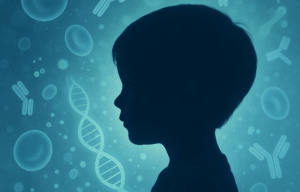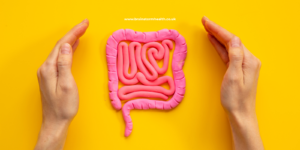THE MICROBIOME SIGNATURE IN AUTISM AND ADHD IS NOT RANDOM When families first hear the phrase gut microbiome they picture something vague. Something abstract. Something that might matter but is hard to pin down. Yet when we test children with autism, PANDAS, PANS and ADHD a clear pattern emerges. A new study from 2025 confirms…
SEROTONIN AND YOUR CHILD: WHY “BOOSTING” IT CAN BACKFIRE
Serotonin has been hailed as the chemical that keeps children calm. Families are told it helps with anxiety, sensory overload, compulsive behaviour and emotional storms. The message is simple. Raise serotonin and life improves. Our clinical testing tells a different story. In children with autism, PANDAS and PANS a single pattern keeps showing up. It…
Can IVIG Reset the Immune System in PANS and Autism?
Imagine your child suddenly stops eating. Not a fussy phase. Not skipping a meal. Overnight, food disappears. Add rituals, regression, or crushing anxiety – most doctors will call it anxiety, depression, or autism. Few will recognise PANS or PANDAS, though that is exactly what it is. Some children also carry an autism diagnosis. Two labels,…
Spike Protein: What You Need To Know
Two days ago, I attended a webinar that I can’t stop thinking about. It wasn’t polished. It wasn’t cautious. But it was urgent, direct, and for many of our patients essential. If your child has PANS, PANDAS, long COVID, or sudden, unexplained neuropsychiatric symptoms, what was discussed needs to be on your radar. The Spike…
Oxalates: The Hidden Toxin Hijacking Your Child’s Health
I’ll never forget the day I met a nine-year-old boy with autism who was in constant distress: He rubbed his eye until it bled, desperate for relief.He woke soaked through the night, unable to control his bladder.He slept for barely two hours at a time, leaving him exhausted and irritable. A routine urine organic acid…
When Socks Feel Like Sandpaper: Reversing Sensory Overwhelm
When a child reacts intensely to everyday sensations, like the seams on a sock or the hum of a light, it is not simply “picky” behaviour. These reactions often stem from an overwhelmed and inflamed nervous system. What’s particularly striking is that these sensory symptoms can fluctuate — one day a child might tolerate their…
Rebuilding the Microbiome: Where to Start and What Actually Works
Nearly every child we test has a gut microbiome that’s barely functional. Lactobacillus? Gone.Bifidobacteria? Gone.Inflammation? High.Pathogens? Thriving.Resilience? Non-existent. The good news? You can rebuild it. But you have to start at the beginning – and that doesn’t mean throwing probiotics at the problem. Step One: Fix the Environment You can’t grow a healthy garden in…
When Energy Vanishes: The Mitochondria Recovery Guide for Parents of Children in Crisis
Mitochondria are often called the powerhouses of the cell, but that barely scratches the surface. These tiny organelles don’t just keep the lights on. They are the command centres. They decide when to repair and when to retreat, when to launch an immune attack and when to stand down. They control inflammation, send out distress…
The Vitamin D Trap: What Blood Tests Don’t Tell You
Have you ever wondered why your child reacts so strongly to certain foods, environmental triggers, or even absolutely nothing at all? Did you know that mast cells, the immune cells responsible for allergic reactions, can spontaneously release histamine without an allergen, infection, or any clear trigger? And what if that was happening because their vitamin…
Constipation in Autism: Root Causes and Real Solutions
If your autistic child struggles with constipation, you’re not alone. Digestive issues are one of the most common yet overlooked challenges in autism. Research shows autistic children are far more likely to experience constipation, bloating, and an imbalanced gut microbiome compared to their neurotypical peers. But this isn’t just about discomfort. When digestion slows, it…
- 1
- 2
- 3
- …
- 5
- Next Page »












